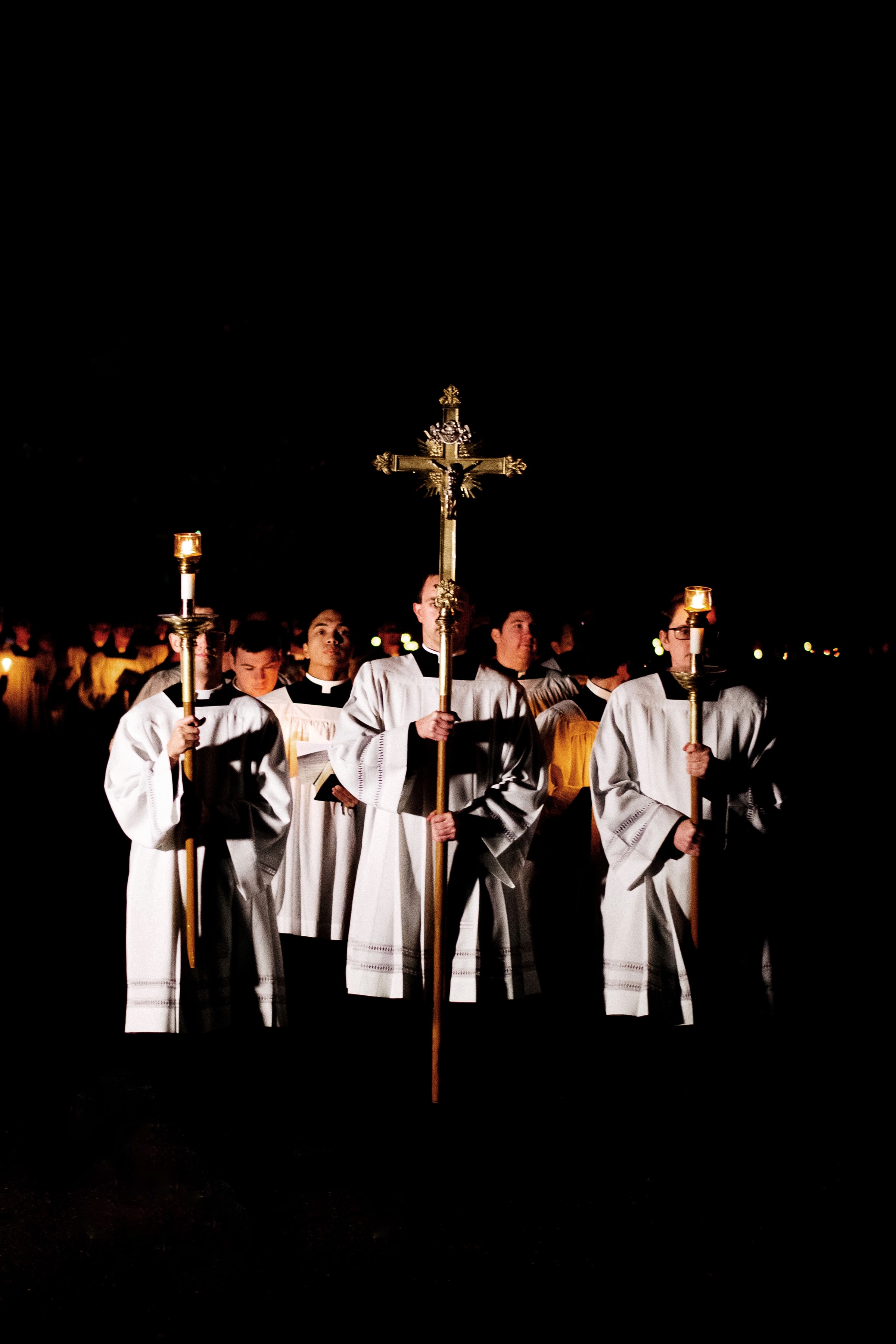Lifestyle
Pilgrims missed penitential walk this Holy Week

This was because of the suspension of the usual Lenten activities this month in Metropolitan Manila and other Luzon areas due to the imposition of the enhanced community quarantine as part of the national government policy to contain the effects on human lives of the pandemic coronavirus disease 2019 (Covid-19). (File photo by Z I/Unsplash)
MANILA — For thousands of devotees of the Our Lady of Lourdes grotto-shrine in San Jose del Monte City, Bulacan, this year’s observance of the Holy Week was very much different from the previous 54 years since 1965.
This was because of the suspension of the usual Lenten activities this month in Metropolitan Manila and other Luzon areas due to the imposition of the enhanced community quarantine as part of the national government policy to contain the effects on human lives of the pandemic coronavirus disease 2019 (Covid-19).
The Archdiocese of Manila and the different dioceses in Metro Manila and nearby provinces of Bulacan and Rizal decided on March 16 to suspend all Lenten activities in their respective jurisdictions. The pastoral statement was signed, among others, by Novaliches Bishop Antonio Gaa, Malolos Bishop Dennis Villarojo, Antipolo Bishop Francisco de Leon, Apostolic Administrator of the Archdiocese of Manila Bishop Broderick Pabillo, Pasig Bishop Mylo Hubert Vergara, Caloocan Bishop Pablo Virgilio David, Military Ordinariate of the Philippines Bishop Oscar Florencio, Parañaque Bishop Jesse Mercado, and Cubao Bishop Honesto Ongtioco.
As a result, there was no traditional Palm Sunday observance at the Bulacan shrine last April 5. The annual penitential walk being done by thousands of devotees on the night of Maundy Thursday also was not held on April 9.
This penitential activity is undertaken by thousands of pilgrims from various places of Metro Manila, particularly Quezon City, and Caloocan City, including Novaliches, Valenzuela City, Meycauayan City, Malabon City, and Navotas City.
In the past years, they used to traverse by foot the more than 20-kilometer distance from MacArthur Highway in Barangay Malinta in Valenzuela City or Balintawak, Quezon City, passing through either the old Novaliches-Polo Road or Quirino Highway which lead from Novaliches to the grotto-shrine in Barangay Gumaok, San Jose del Monte City.
The latest penitential walk was held on Maundy Thursday last year.
Background: How the sprout Bulacan grotto-shrine came about.
Situated about 30 kilometers northeast of Manila and just beyond the boundary of Bulacan and Novaliches, a former town divided between Quezon City and Caloocan City, the grotto was opened for public veneration on the Feast of Our Lady of Lourdes on Feb.
11, 1965.
Since then, thousands of pilgrims used to flock to the shrine to pray and offer flowers and candles to the Our Lady of Lourdes, giving thanks for prayers answered and favors received and meditating in front of the Stations of the Cross on the shrine’s Rosary Hill.
The number of visitors usually peaked during the Holy Week, particularly on Palm Sunday, Maundy Thursday, Good Friday, Holy Saturday, and Easter Sunday.
In an interview on Good Friday last year (April 19, 2019), Marietta G. Guanzon-Holmgren, president of the Grotto Shrine Foundation Inc. (GSFI), said the shrine was a project of their religious parents, Horacio A. Guanzon and Anita Guidote-Guanzon, who hailed from known and wealthy families from Pampanga as well as Bulacan and Nueva Ecija.
According to Holmgren’s book, “The Grotto Shrine of Our Lady of Lourdes in the Philippines,” her mother Anita decided to build the grotto shrine on the family-owned 25-hectare land in the former barrio of Gaya-Gaya in San Jose del Monte, now a city. The same barrio is now part of Barangay Gumaok of the same city.
Holmgren said building the grotto-shrine was an act of thanksgiving by her mother, having been cured miraculously of cancer after a pilgrimage to the town of Lourdes in southwestern France in 1961.
The well-known story of the grotto shrine started with the Guanzon family matriarch Anita being diagnosed to have cancer of the uterus in 1961 and given by her doctors only six months to live.
She went on a pilgrimage to Lourdes, France on June 29, 1961, accompanied by her husband and one of their daughters. She came home cured of cancer in September of the same year and lived three decades more until she died in 1990.
She left the management of the grotto to her eldest daughter, Marietta, whose attention since then has been focused on the completion of another project that was started by her parents before they died—the construction of a basilica that resembles the one in Lourdes, France.
Her father, Horacio, died on June 4, 1985 and was followed by her mother, Anita, on March 31, 1990.
The grotto shrine’s existing attractions include the Calvary Hill that features 14 Stations of the Cross that portray the agony of Jesus Christ.
There are 127 statues presented in dioramas that took three years to construct, according to the book.
Behind the grotto church and the basilica is a spring that is said to yield miraculous water that brings hope to those who are spiritually and physically sick.
There is also the Rosary Hill, with 155 very big beads made of concrete together weighing over eight tons and is said to be the biggest Tri-Rosary in the world.
In 1974, Irish-born Roman Catholic priest Patrick Peyton flew in to the Philippines from the United States to inaugurate the Rosary Hill.





















